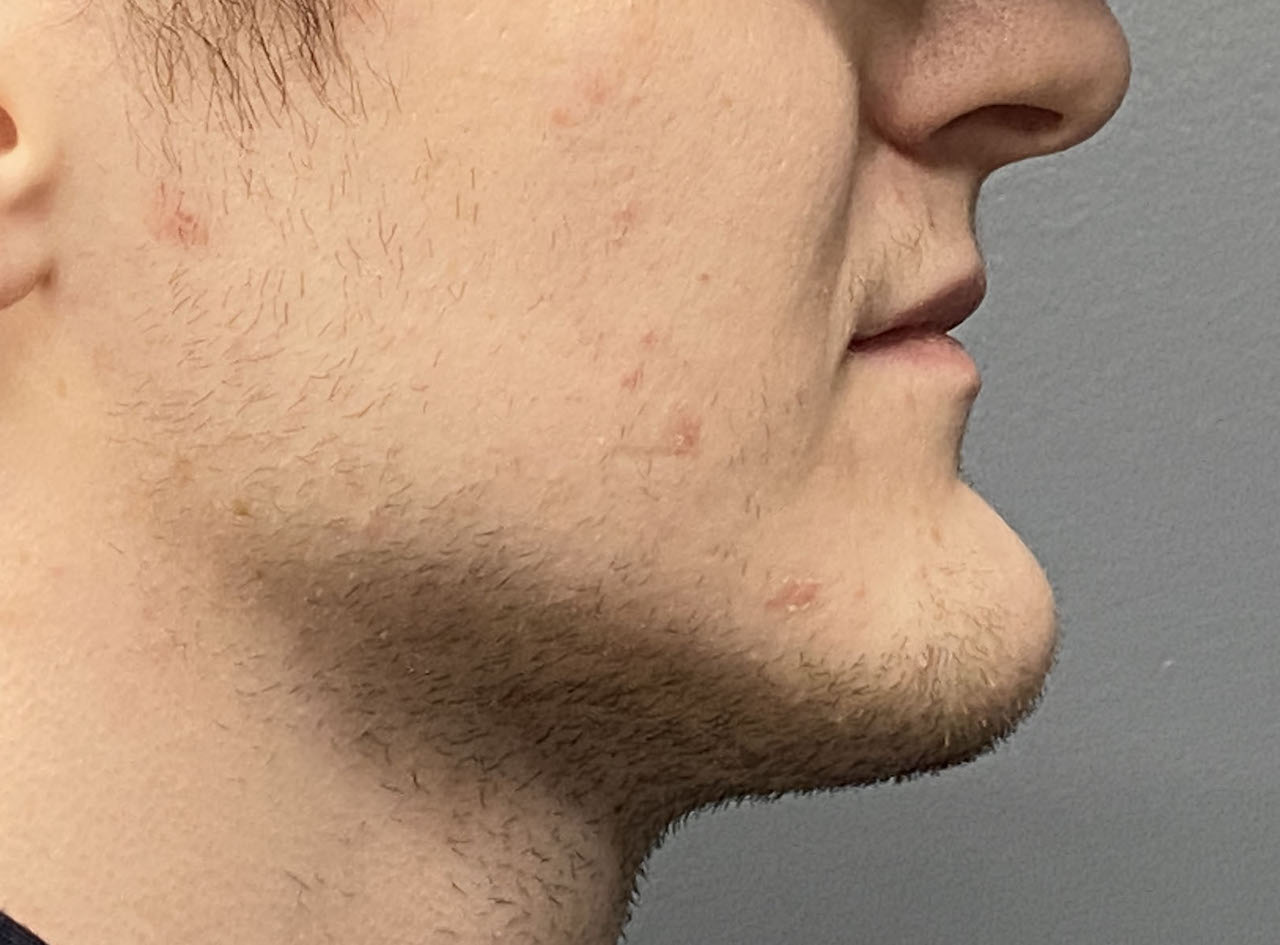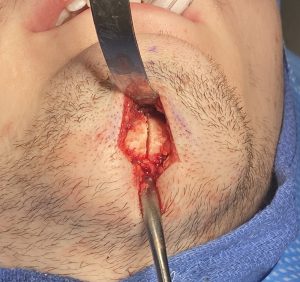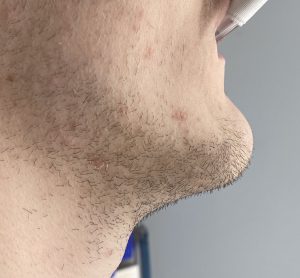Background: Excessive chin projection is a far more frequent aesthetic concern in women than in men.This is because men can tolerate a larger chin projection which is associated with a more masculine appearance. But there is a point where the chin projection can become excessive or hypermasculine. While that determination is ultimately up to the patient it is a question of far forward does the chin protrude beyond a vertical line dropped down from the lower lip. A few millimeters may be acceptable but when it is much more than that it it likely to be viewed as an undesired overprojecting chin.
In horizontal reduction of the overprojecting chin the technique used must consider the amount of bone reduction and how that will affect how the overlying soft tissue chin pad reduces around it. The key concept to grasp is that the soft tissue chin pad has very little ability to shrink down and become smaller. While in small chin reductions the soft tissue chin pad may not be a problem this can not be said when larger amounts of bone support are removed. Thus techniques that do not consider soft tissue chin pad management with the bone reduction will essentially trade off one problem (chin overprotection) for another. (chin pad ptosis)
The submental chin reduction technique offers the best approach in this type of chin problem as it addresses both hard and soft tissue excesses. In done so with one tradeoff…a submental scar…but there is an easier problem to manage if its appearance is of secondary concern.
Case Study: This male presented with a profound horizontal chin excess that was 12mms behind a horizontal line dropped down from the lower lip. But what bothered him the most was when he smiled the pullback of the chin pad over the projecting chin bone made it looked very unnatural.
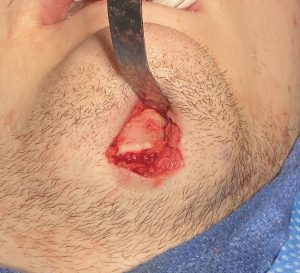
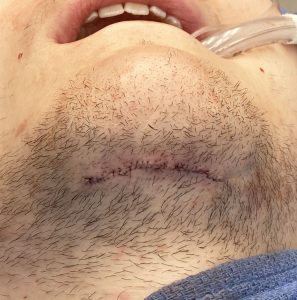
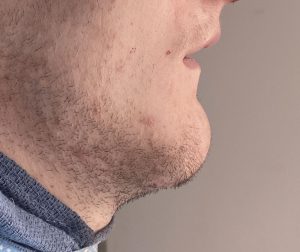
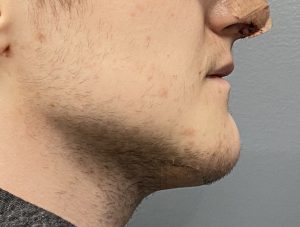
While the submental chin reduction is almost always the best approach for large horizontal chin reductions the resultant scar is rarely a significant issue for men. Incisional and closure techniques that preserve the beard follicles are important to optimize the resultant scar and avoid a very visible non-hair bearing patch of skin under the chin. But no matter how well the submental excision is closed there is always a chance that a submental scar revision will be needed to optimize its appearance.
Case Highlights:
1) Chin reductions in men are done far less frequently than in women.
2) Significant horizontal chin reductions are best done by a submental approach where both excessive bone and soft tissues can be concurrently reduced.
3) Reducing a large projecting chin bone is best done by a combined osteotomy and ostectomy approach.
Dr. Barry Eppley
Indianapolis, Indiana

